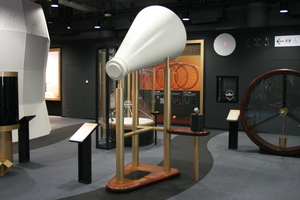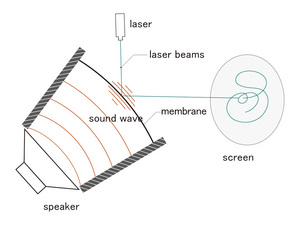Nagoya City Science Museum
TOP > Exhibition Guide > Floor Map> Voice Vibration
Voice Vibration



Purpose of Exhibition
We can understand that voices and sounds are air vibrations. While enjoying the changes of pattern on the screen depending on sounds our voice makes, we can recognize the relationship between sound and vibration.
Additional Knowledge
If you speak while facing the display, the membrane stretched on the opposite side vibrates. The membrane is made out of a material which reflects light, that is, a laser light. When the screen vibrates, the direction toward which the laser is reflected changes and the laser patterns appear on the screen. The laser light vibrates strongly according to the membrane material, size and the tension. The laser beam will draw regular patterns according to certain sounds.
In this exhibit, no matter how loudly you speak, it is not possible to draw beautiful laser figures. Though a loud voice is better, it does not always works for it. It is understood that a clear voice can make beautiful figures according to the exhibit.
It is no doubt any that any voice can make the air vibrate. However, a proper voice is needed to vibrate the membrane strongly. To put it simply, when speaking loudly at the same time as the membrane is hit, it can make the membrane vibrate efficiently.
Generally, the sound by which the membrane vibrates signals the drumbeat. There is a method of emitting the sound by the shake of not the membrane, but the string. They are stringed instruments such as guitars and violins.
Both sounds are emitted through shaking (vibration). The chord line vibration is a one dimensional vibration, but as for the drum vibration, it's a two dimensional vibration.
Two-dimensional drum vibration of the membrane is a very complex thing.
This exhibit shows that to draw nice ellipses and circles or complex loci, there are different ways to make the membrane of the drum vibrate.
Article by Yoshitaka Yamada, curator
